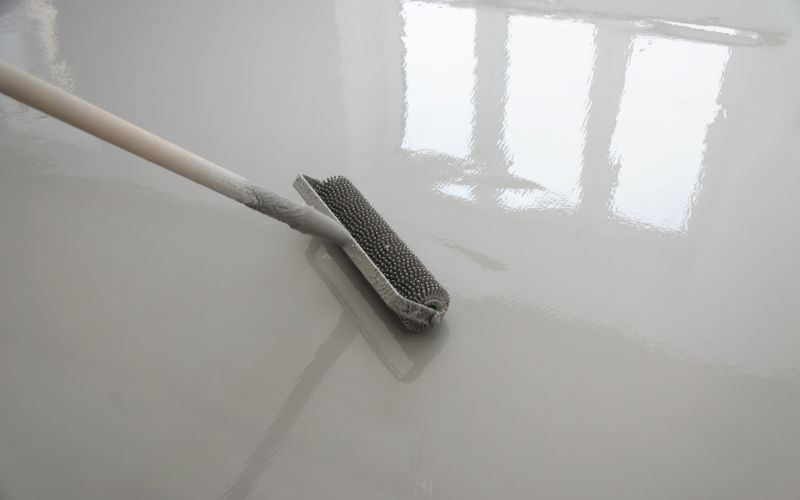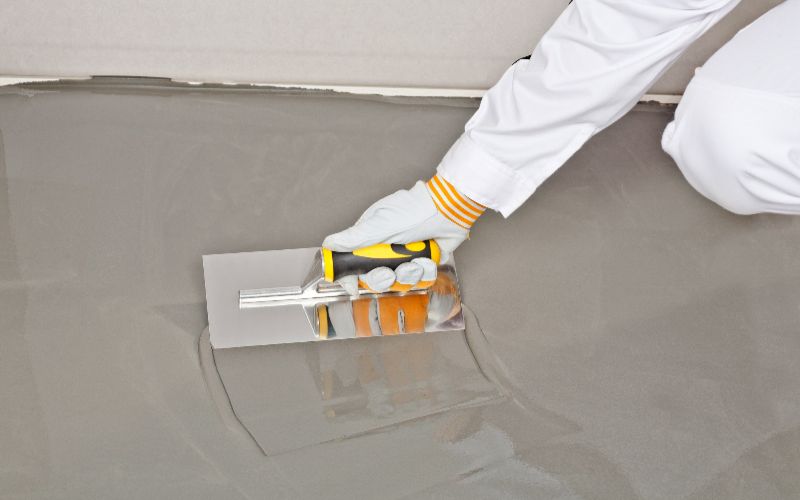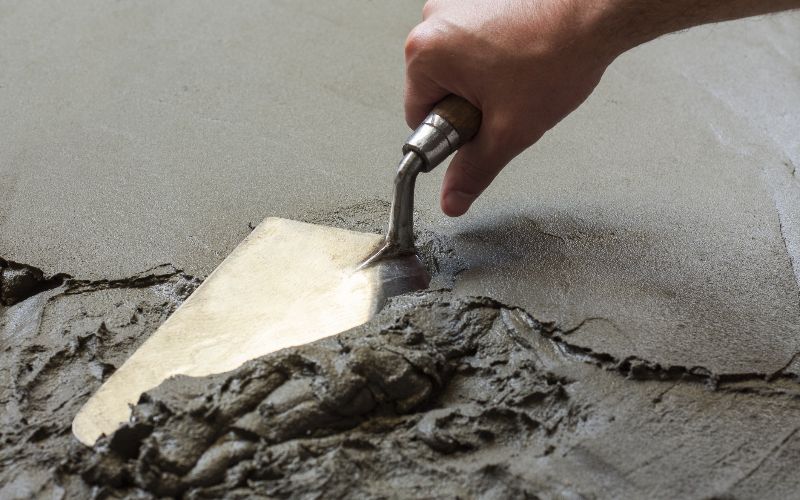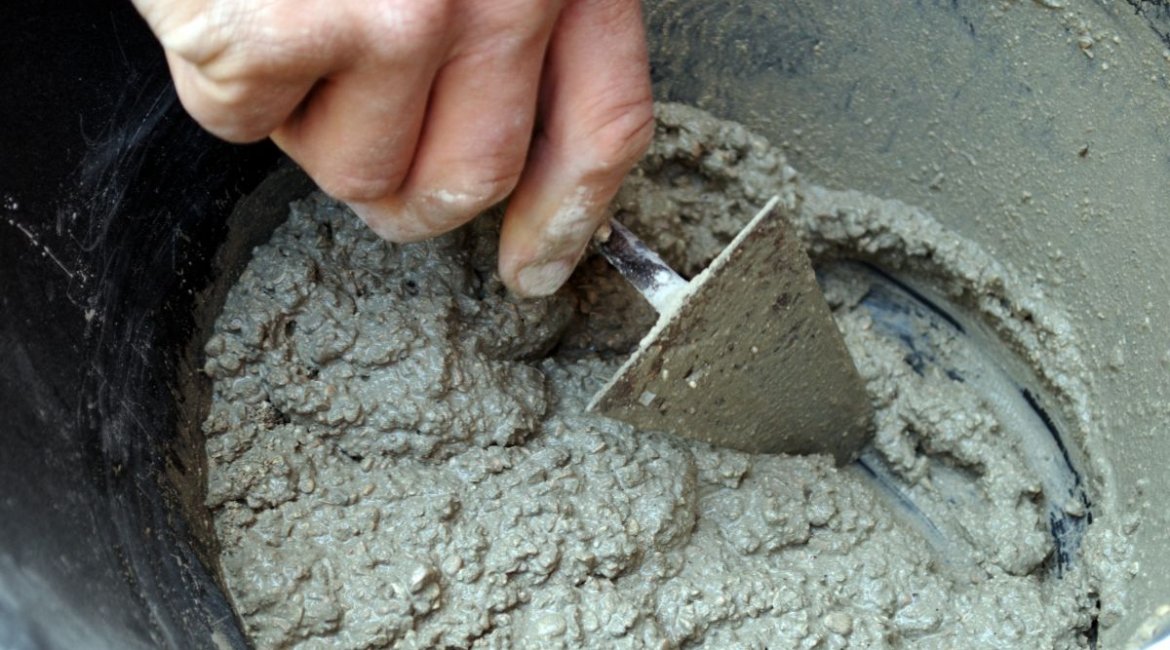Using a concrete mixer for both large-scale and small-scale projects requires some insight into concrete mix ratios. The ratio of cement, sand, stone, and water will determine the strength of your concrete, so you want to make sure you know exactly how much to measure out before using your concrete mixer.
A major benefit of concrete as a building material is that it can be adjusted and modified to suit your building needs, and a lot of this modification comes about via your ratio mix. Need something solid and watertight? Extra smooth or gravelly? Adjusting your mix will help you achieve your desired results, but be sure you’re prepared beforehand and know exactly what you’re doing. The last thing you want is a concrete mix that doesn’t fit your requirements, and this is one scenario where simply eyeballing your ratio mix won’t cut it.
In this quick read, we’ll be filling you in on everything you need to know about concrete mix ratios. We’ll also be touching on a few reliable and affordable concrete mixers available from BS Power to help you get the job done right. Keep reading to learn more and stick around to the end if you’re curious about BS Power and what we have to offer.
Know What You’re Putting In Your Concrete Mixer
Concrete is one of the most widely used building materials in the world, both because of its incredible versatility and how easy and affordable it is for just about anyone to work with. No matter where you go, you’ll see concrete popping up in everything from skyrise buildings to patio stairs and more. It can be mixed on a massive scale and transported via trucks, and it can be used in smaller, easy-to-manage concrete mixers like the ones available from BS Power.
If you’re in need of a few new concrete mixers to add to your personal arsenal, or if you’d like to upgrade your construction business with a few more high-quality supplies, a concrete mixer from BS Power is both affordable and reliable, or in other words, easy to use and built to last.
With that in mind, however, having a reliable concrete mixer like the ones offered by BS Power is only the first step. What you put into that mixer is just as important as the concrete mixer itself. A high-quality concrete mixer won’t do much good if you’re using the wrong ratios or mixing low-quality materials. The mix ratio you choose determines everything from how easily the concrete spreads to how long it will last once it’s set. So it’s important to be aware of how much aggregate and binding agents you’re chucking into your mixer.
What Is Concrete Mix Ratio?
As any experienced builder will know, concrete is a mixture of cement, water, and sand, stone, or gravel aggregates. The ratio of each of these components mixed together will determine the workability and strength of the final product. Ratio can also impact a few more factors, like texture, pouring, and whether or not the final product is watertight. Depending on the kind of construction project you’re working on, ready-mix concrete can also be used if you want to skip the ratio-measuring step entirely. You could also enlist the help of a professional to ascertain the ratio based on your specific requirements.
But for the purposes of this article, we’ll assume that you’ve decided to mix the concrete yourself. Maybe you want more control over your ratio mix to get a very specific result, or maybe you just want bragging rights for handling the entire construction project without cutting any corners. Either way, let’s move on to what exactly a concrete mix ratio is:
Concrete mix ratio involves determining suitable ingredients and quantities of said ingredients to produce a concrete mix that suits your needs. Ideally, your concrete mix ratio should result in concrete that is simple and hassle-free to work with as well as high in both strength and durability. That ratio of the ingredients you use will determine these factors and can be adjusted to get your desired results. The variables in most concrete mixes include water, cement, and aggregates like sand, stone, or gravel. Cement works as a binding agent that helps keep the other aggregates together.

What Is The Best Ratio For Mixing Concrete?
So, what is the best ratio for mixing concrete in your concrete mixer? That will all depend on what kind of project you’re working on and what outcome you hope to achieve. However, for general applications and small-scale construction projects, the most commonly used concrete mix ratio is 1 part cement, 2 parts sand, and 4 parts gravel.
This is widely referred to as a nominal mix and works well for projects like driveways, garden paths, and small concrete slabs. When combined with just enough water to make the mix workable, this ratio usually results in concrete with a compressive strength of about 20 MPa (megapascals) after 28 days of curing.
Examining Specifics
For high-strength concrete to be used in structural components like columns, beams, load-bearing walls, and foundations, a 1:1.5:3 ratio is usually recommended. This mix contains more cement, a binding agent that contributes to a higher compressive strength after proper curing. However, this type of mix requires careful control of water content to avoid weakening the final product. It’s also best paired with high-quality aggregates to ensure optimal strength and minimal voids. In many cases, admixtures can be added to further enhance performance.
As mentioned earlier, the more versatile option for general construction is the 1:2:4 ratio. With a compressive strength of around 20 MPa when measured and mixed correctly, this mix provides a good balance between sturdy durability and being relatively easy to work with. It’s a go-to option for plenty of smaller-scale construction projects because of the simplicity and reliability of the concrete mix.
On the other end of the spectrum is lean mix concrete, using a 1:3:6 ratio. This mix contains more aggregate and less cement, which significantly reduces the cost of materials. However, it also lowers the compressive strength to about 10–15 MPa, making it suitable only for non-structural uses. For example, construction projects that involve filling large areas, creating curbs, or lining drains will make use of this ratio mix to save on costs and cover a larger area. While affordable, this mix should not be used for applications that need to support significant weight or withstand heavy use.
What About Water/Cement Ratio?
Beyond the proportions of sand, cement, and aggregates, the water-cement ratio (W/C ratio) should not be overlooked either. This ratio is an important part of the process and vital in determining the strength and durability of the final concrete product. For most standard mixes, an ideal W/C ratio falls between 0.4 and 0.6, meaning that for every 1 kg of cement, you should use 0.4 to 0.6 kg of water.
You’ll also want to be very careful to get this ratio right. After all, too much water will weaken the concrete, increase shrinkage, and make it more susceptible to cracking, while too little water can make the mix stiff and difficult to handle or pour. As a rule of thumb, always aim for the lowest water content that still achieves good workability to make sure you get a strong, durable finish.

Should I Measure By Volume Or By Weight?
For small-scale or DIY projects, concrete is usually mixed by volume. You can use simple tools to make this mixture, like a bucket and shovel for mixing, or you can invest in a modest-sized mixer from BS Power. Regardless of how big or small your concrete project is, having a concrete mixer on hand can take the strain out of the mixing process and make for a better, smoother concrete mixture, too.
When it comes to larger or structural projects, mixing by weight is the preferred method. This approach ensures greater accuracy and consistency, especially for the cement and water components, which have the most significant impact on the concrete’s strength and performance. Weighing materials helps avoid the variability that can occur with volume measurements, particularly when moisture levels in sand or gravel affect their bulk.
Should I Use Ready-Mix Or Mix On-Site?
Concrete can be prepared in two main ways. You can purchase ready-mix concrete or choose to make the concrete mixture yourself on-site. Ready-mix concrete is produced at a batching plant where ingredients are already measured and combined according to a set formula. This type of mix is useful for large-scale building and construction projects where consistency and strength are non-negotiable. Ready-mix concrete is usually delivered to your site in mixer trucks, ready for immediate use.
On the other hand, site-mix concrete refers to concrete mixtures that are measured and prepared at your construction project location. While this offers more flexibility and allows you to make adjustments to the mix based on your varying needs, it also requires skilled supervision.
Accurate measuring and thorough mixing are essential to prevent weak spots or structural issues. If you’re working with site-mix concrete, you’ll need to make sure that your team understands proper batching techniques and is making use of a reliable mixer to maintain quality and reliability.
What About Admixtures?
Sometimes, the standard 1:2:4 concrete mix doesn’t quite meet the specific needs of a project, and that’s where chemical admixtures come in. These additives work to enhance performance without making any major changes to the base mix ratio.
For example, plasticisers can be added to improve the workability of the concrete mix, allowing it to flow more easily without the need to add any extra water. Adding water could compromise the overall strength of the final product, so using an admixture instead is a great way to get better flow without compromising durability.
For another example, accelerators and retarders are useful for adjusting setting times, which is especially helpful in extreme temperatures where concrete may set too quickly or too slowly. Waterproofing agents are also another common addition, reducing the permeability of concrete in outdoor or below-ground applications. While admixtures don’t directly change the concrete mix ratio, they allow for better control over the water-cement balance, ultimately improving both performance and durability.

Concrete Mixers From BS Power
With all of the above in mind, you should be set to start measuring your own concrete ratios and mixing all components in your very own concrete and cement mixer. If you’re on the hunt for the perfect device to help you handle your construction projects, look no further than BS Power. We source and supply only the best of the best construction tools, including reliable concrete mixers to help you handle your projects.






